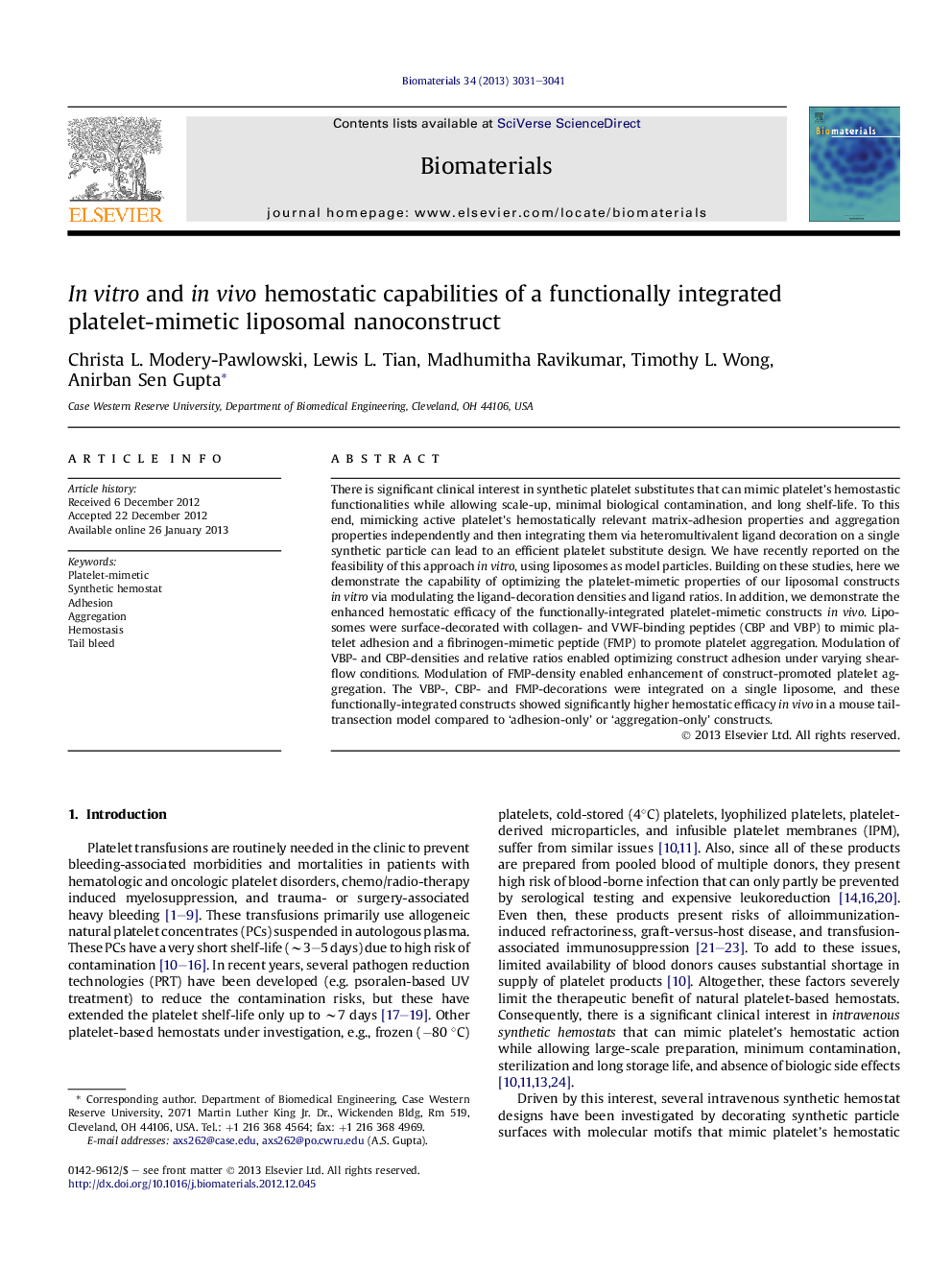| Article ID | Journal | Published Year | Pages | File Type |
|---|---|---|---|---|
| 6268 | Biomaterials | 2013 | 11 Pages |
There is significant clinical interest in synthetic platelet substitutes that can mimic platelet's hemostastic functionalities while allowing scale-up, minimal biological contamination, and long shelf-life. To this end, mimicking active platelet's hemostatically relevant matrix-adhesion properties and aggregation properties independently and then integrating them via heteromultivalent ligand decoration on a single synthetic particle can lead to an efficient platelet substitute design. We have recently reported on the feasibility of this approach in vitro, using liposomes as model particles. Building on these studies, here we demonstrate the capability of optimizing the platelet-mimetic properties of our liposomal constructs in vitro via modulating the ligand-decoration densities and ligand ratios. In addition, we demonstrate the enhanced hemostatic efficacy of the functionally-integrated platelet-mimetic constructs in vivo. Liposomes were surface-decorated with collagen- and VWF-binding peptides (CBP and VBP) to mimic platelet adhesion and a fibrinogen-mimetic peptide (FMP) to promote platelet aggregation. Modulation of VBP- and CBP-densities and relative ratios enabled optimizing construct adhesion under varying shear-flow conditions. Modulation of FMP-density enabled enhancement of construct-promoted platelet aggregation. The VBP-, CBP- and FMP-decorations were integrated on a single liposome, and these functionally-integrated constructs showed significantly higher hemostatic efficacy in vivo in a mouse tail-transection model compared to ‘adhesion-only’ or ‘aggregation-only’ constructs.
